Oil
-
A potential conflict between Saudi Arabia and Russia is emerging within OPEC+. Russia wants to maintain the current status quo, while Saudi Arabia may consider taking additional steps to stimulate prices.
-
There are also speculations that Russia is producing and exporting more than it has committed to in the agreement, which was not approved by its Arab allies.
-
Currently, the breakeven level for balancing Saudi Arabia's budget is estimated at $81 per barrel.
-
Drilling rigs in the United States continue to decline, suggesting that production consolidation in the U.S. may persist in the near future.
-
On the other hand, the agreement regarding the suspension of the U.S. debt ceiling could lead to an acceleration in the issuance of permits for new energy projects.
-
There are doubts that despite the record-breaking oil demand in China in March, the country may not be able to significantly increase its imports in the second half of the year due to recent economic stagnation. On the other hand, oil inventories in China are shrinking.
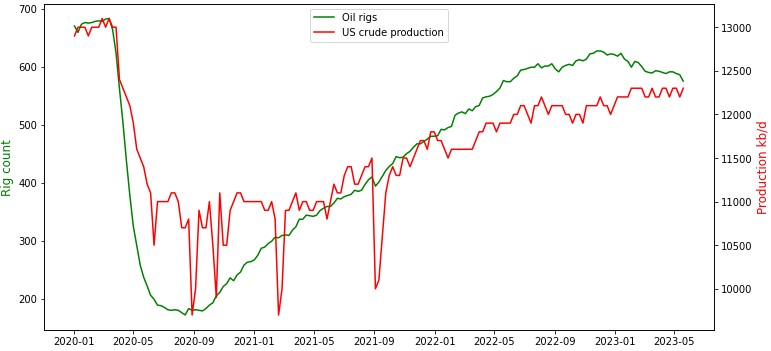 Number of oil rigs in the United States is falling, suggesting that US oil production may not rise further. Source: Bloomberg, XTB
Number of oil rigs in the United States is falling, suggesting that US oil production may not rise further. Source: Bloomberg, XTB
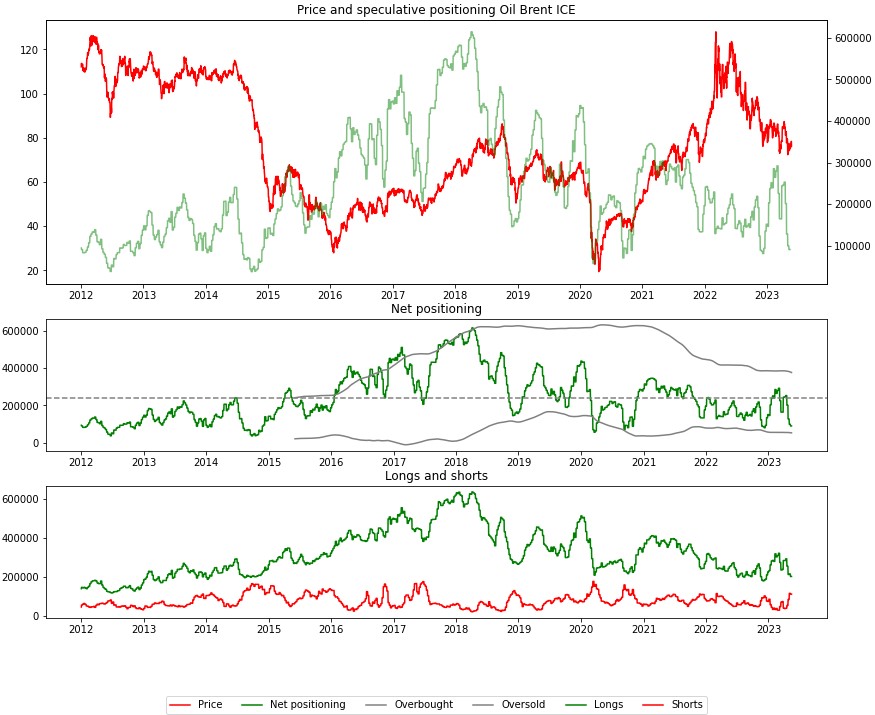 Positioning data on Brent suggest that the commodity is significantly oversold. Source: Bloomberg, XTB
Positioning data on Brent suggest that the commodity is significantly oversold. Source: Bloomberg, XTB
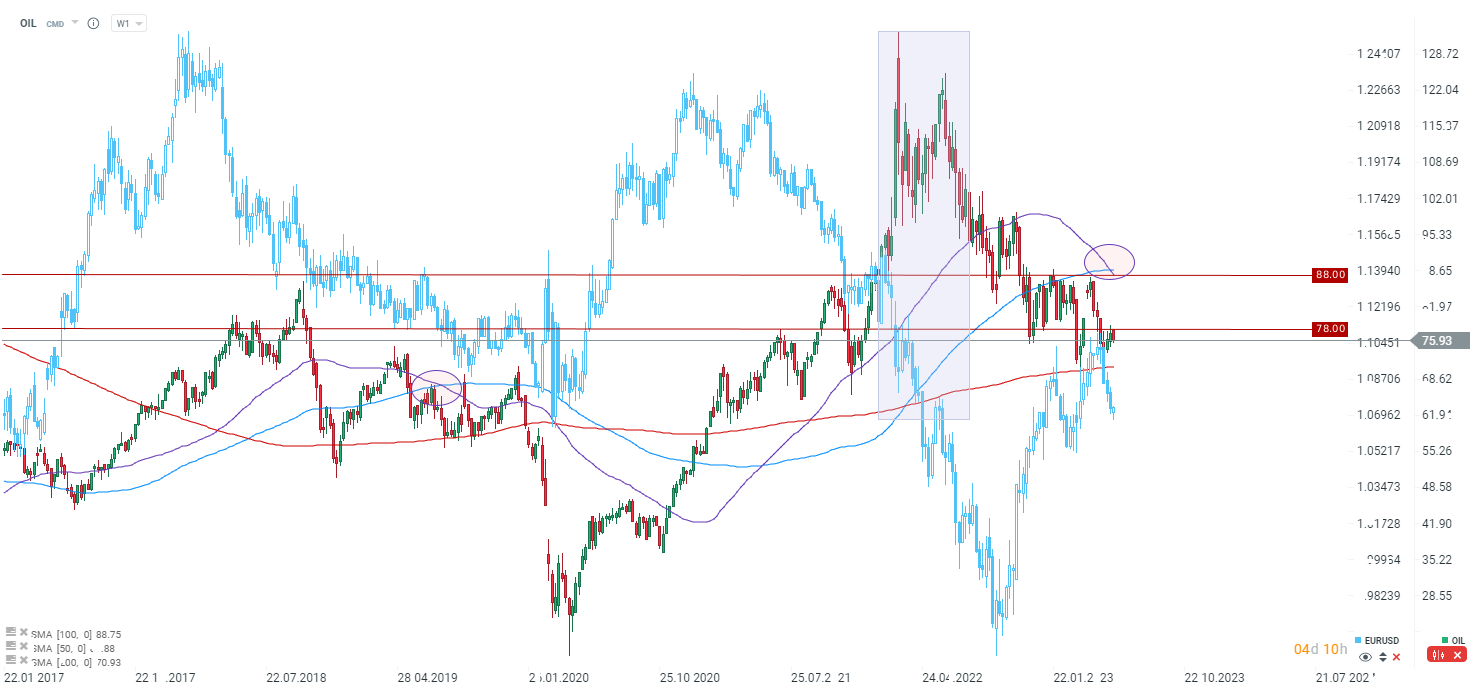 Brent (OIL) is pulling back from the $78 per barrel area in spite of a rebound on EURUSD this week. An important technical signal was generated last week - a drop of 50-period moving average below 100-period moving average. Source: xStation5
Brent (OIL) is pulling back from the $78 per barrel area in spite of a rebound on EURUSD this week. An important technical signal was generated last week - a drop of 50-period moving average below 100-period moving average. Source: xStation5
Natural Gas (NATGAS)
-
Gas inventories are currently more or less in line with what was happening a year ago and with the 5-year average.
-
Even in the case of production decline and inventory drop, potential price increases may be heavily limited.
-
Although U.S. gas based on the Henry Hub benchmark has little to do with the global gas market, prices worldwide are clearly falling. Currently, prices in Asia are around $10/MMBTU
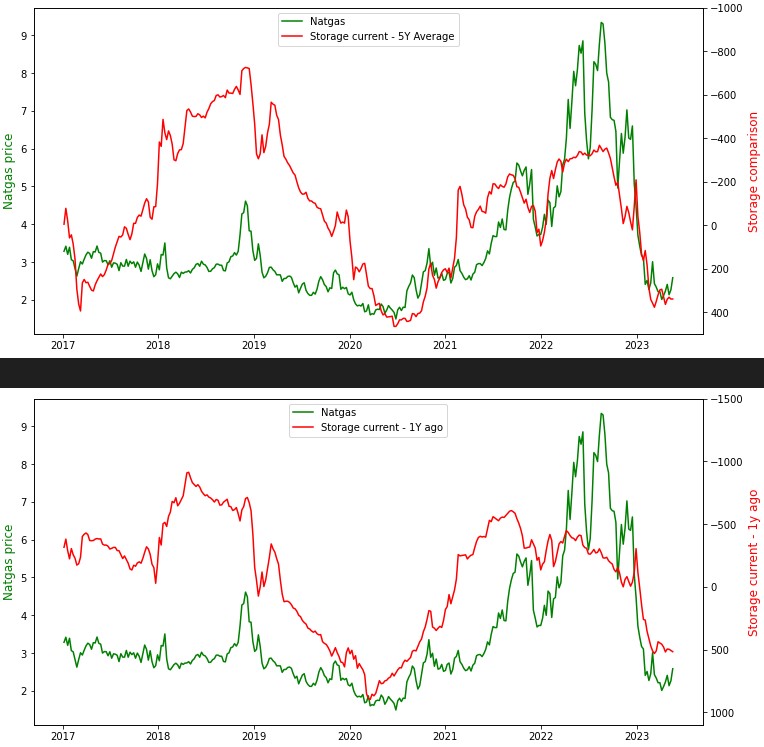
Comparative inventories are consolidating at very high levels and are not flashing a price rebound signal yet. Source: Bloomberg, XTB
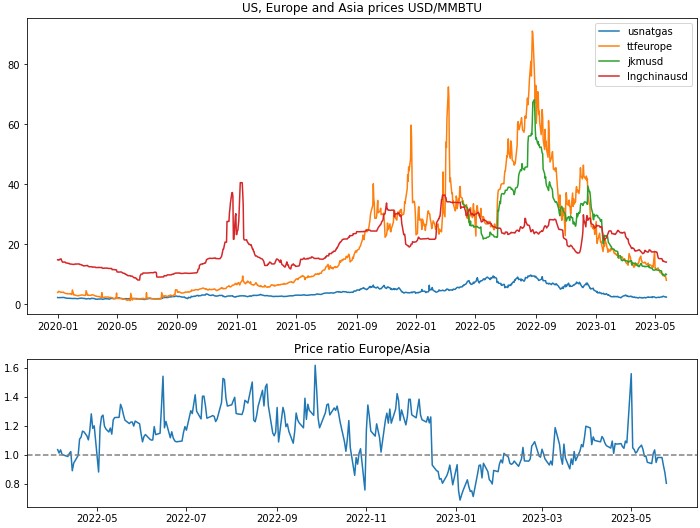
Prices in Asia and Europe plunged significantly, in a sign that we may be experiencing an oversupply of natural gas and limited demand for the commodity, especially in Asia. Source: Bloomberg, XTB
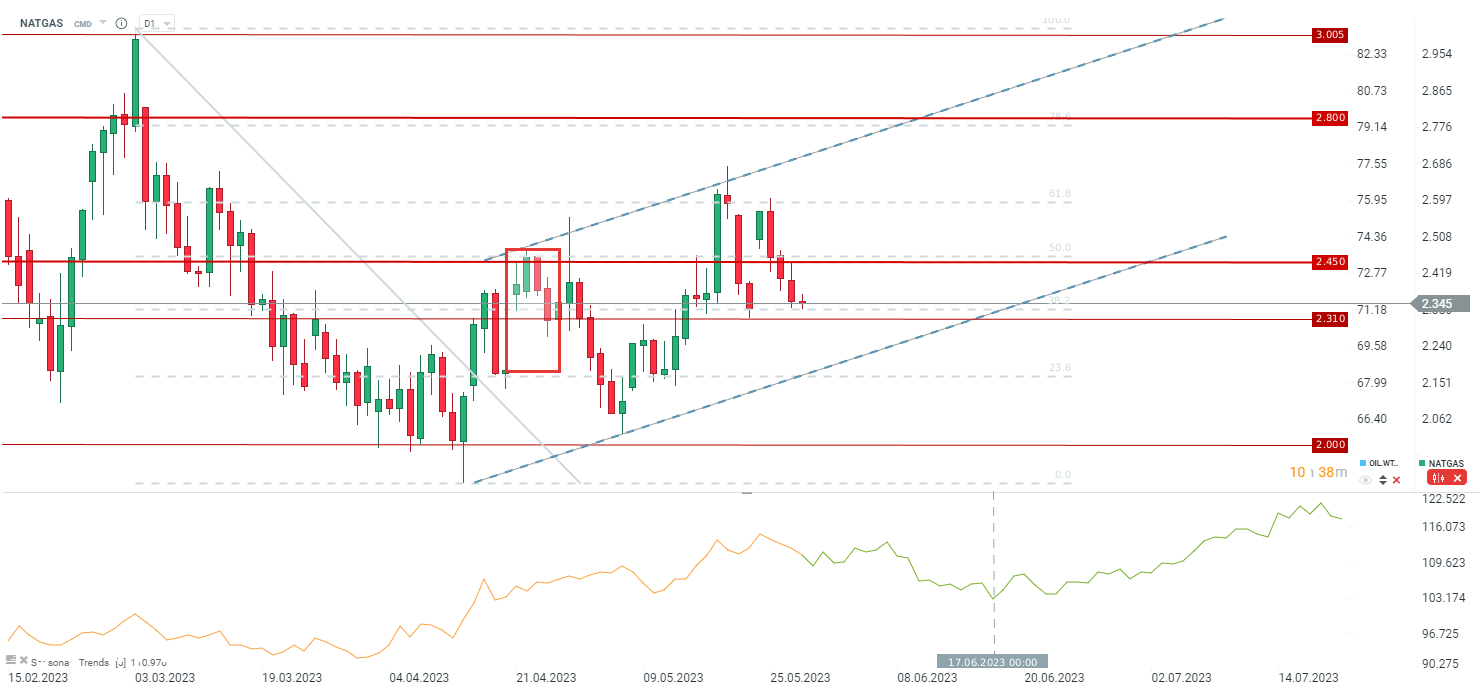
NATGAS is currently testing an important support zone ranging above $2.3 per MMBtu. Seasonal patterns suggest that prices should trade within range and later drop in the second week of June before demand increases during cooling season in the United States. Source: xStation5
Wheat
-
The production prospects in the USA and Europe differ significantly. In Europe, substantial yields are expected, except in drought-affected Spain. In the USA, the quality of crops is still rated low, although it has increased from historical lows.
-
In France, which is the main wheat producer in the EU, over 90% of crops were rated as good or excellent.
-
Positioning on wheat is still extremely low, indicating that in the event of major production issues in the US, the grain could be poised for a rebound.
-
Short positions have increased rapidly, but we are currently also witnessing a moderate rise in long positions. A similar situation can be observed on corn positioning. On the other hand, when it comes to soybean positioning, we saw an increase in short positions and a decrease in long positions.
-
Wheat is facing additional pressure since wheat export agreement with Ukraine was reached as Ukraine remains one of the world's largest grain exporters. At the same time, recent data shows that ship inspections in Ukraine are very slow, increasing the chances of Russia seizing the market.
-
Russia will be a key exporter this year in terms of volume growth. Harvest is expected to reach 130 million tons, with exports projected at 55 million tons.
-
Recent data on grain inspections in the US suggests a drop in demand for American grain.
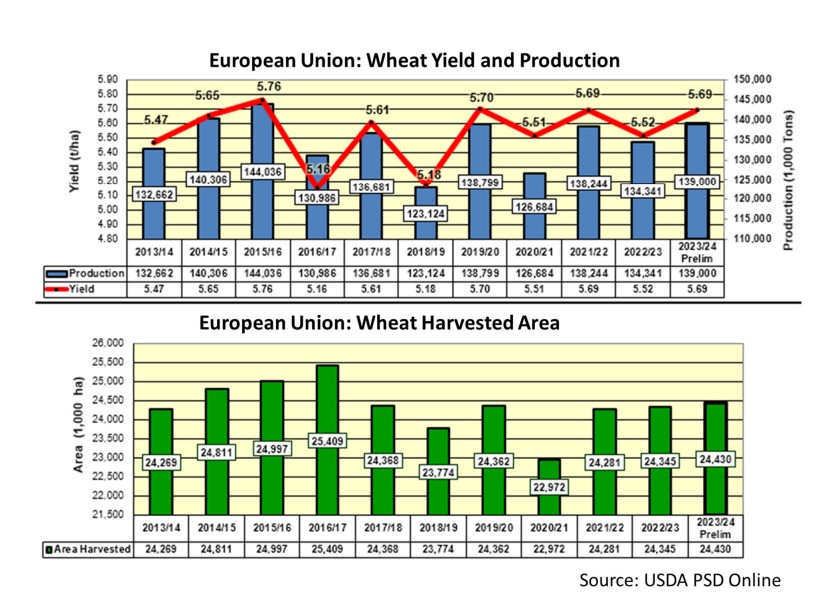
This year's harvest area in the European Union is expected to be the biggest since 2016/17 season. Production and crop yield is expected to be the highest since 2019/20 season. Source: USDA
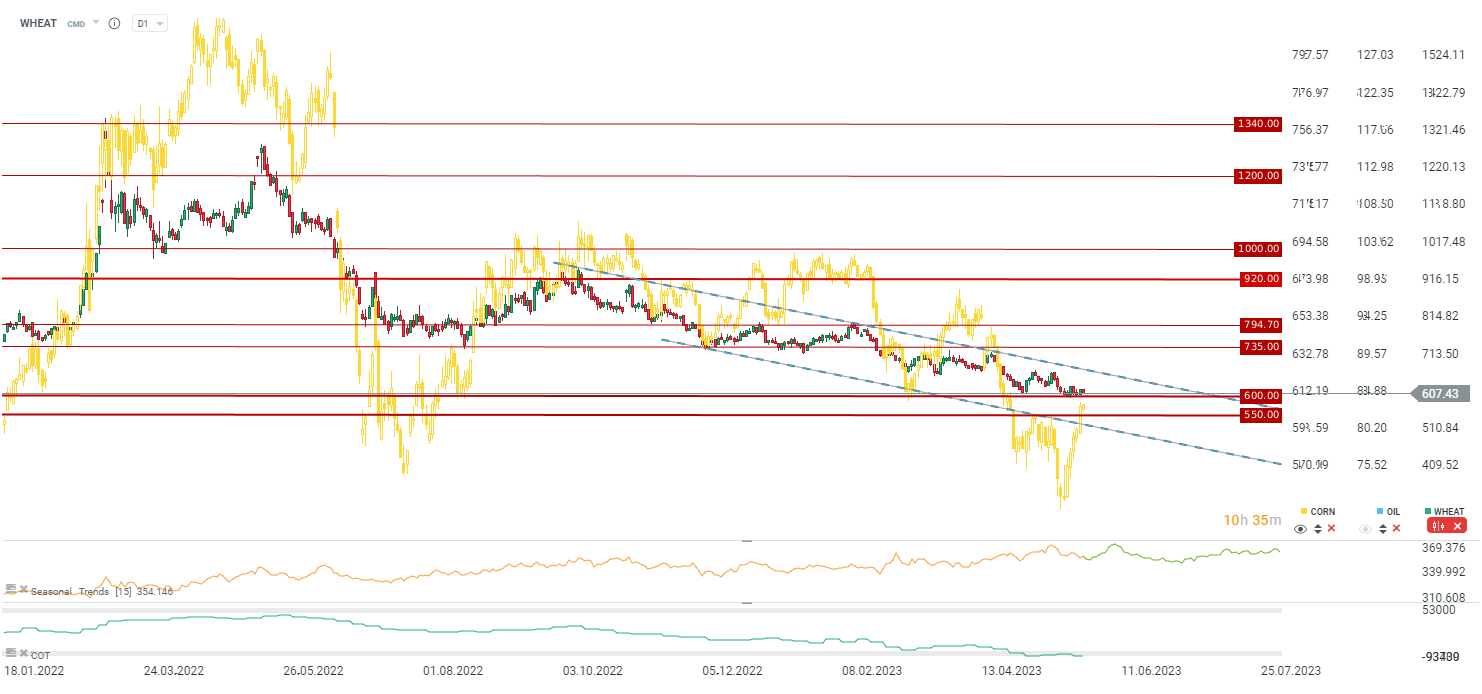
Wheat prices is testing 600 cents per bushel area. The 550-600 area has been an important swing level in the past and one cannot rule out that demand-side reaction will occur there. Simultaneously, one can note that corn prices started to rebound even though the situation in terms of oversupply or positioning is similar to wheat. Source: xStation5
Soybean
-
Net speculative positions are decreasing to the lowest level since the end of 2021. We are observing sharp declines in long positions and an increase in short positions. A similar situation occurred in 2018 when the price fell from a relatively high consolidation around 1000 c/b to around 800 c/b.
-
The May WASDE report showed a significant increase in ending stocks, mainly due to China, where imports and production were excessive compared to the growth in demand. Nevertheless, China leads in global soybean consumption growth.
-
Soybeans remain under similar downward pressure as wheat but are not responding to the recent rebound in corn prices.
-
Soybeans remain in significant divergence with the Brazilian real.
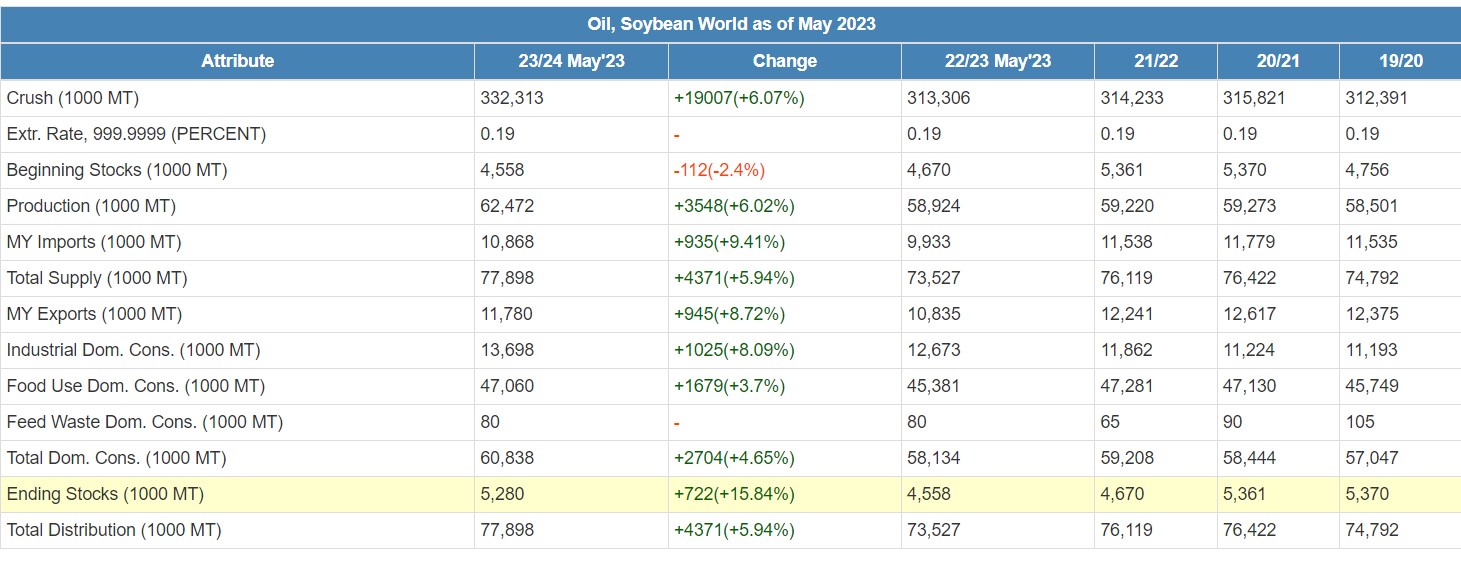
Global soybean inventories are around 15% year-over-year higher, mostly thanks to China. Source: USDA
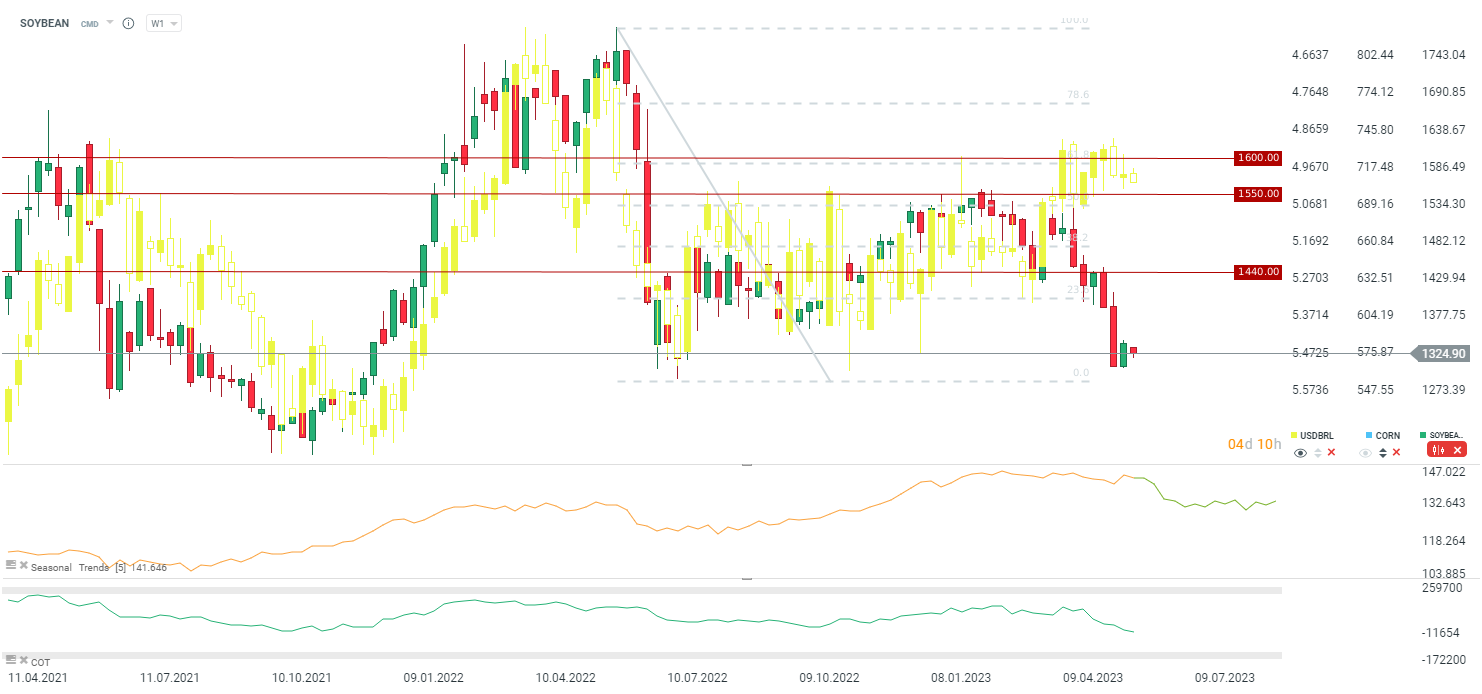
SOYBEAN has been testing local lows from July 2022 recently and trades with a large divergence to Brazilian real. Seasonal patterns suggest continuation of a downward move but uncertainty relating to US crops and drought may trigger a price rebound off an extremely low levels. Source: xStation5
3 markets to watch next week (24.10.2024)
Chart of the day: GOLD (24.10.2025)
NATGAS loses after the EIA inventories report
BREAKING: OIL gain extends to 3.5% 📈Chinese state companies stop Russian oil purchases
This content has been created by XTB S.A. This service is provided by XTB S.A., with its registered office in Warsaw, at Prosta 67, 00-838 Warsaw, Poland, entered in the register of entrepreneurs of the National Court Register (Krajowy Rejestr Sądowy) conducted by District Court for the Capital City of Warsaw, XII Commercial Division of the National Court Register under KRS number 0000217580, REGON number 015803782 and Tax Identification Number (NIP) 527-24-43-955, with the fully paid up share capital in the amount of PLN 5.869.181,75. XTB S.A. conducts brokerage activities on the basis of the license granted by Polish Securities and Exchange Commission on 8th November 2005 No. DDM-M-4021-57-1/2005 and is supervised by Polish Supervision Authority.


